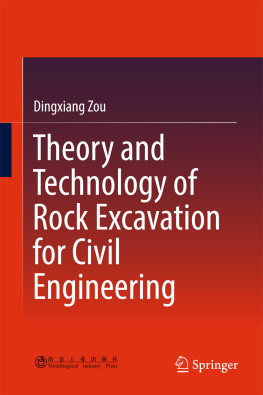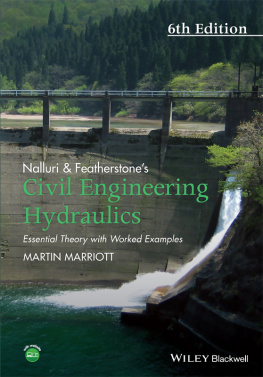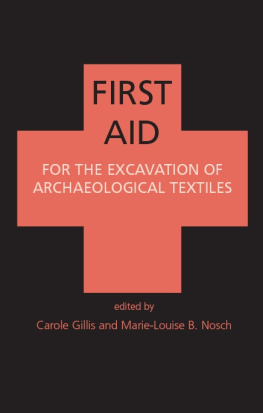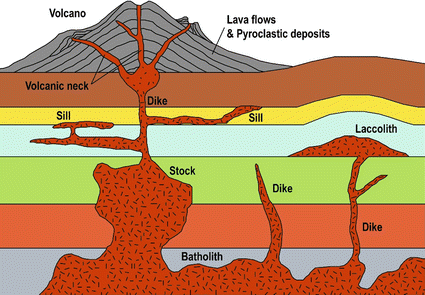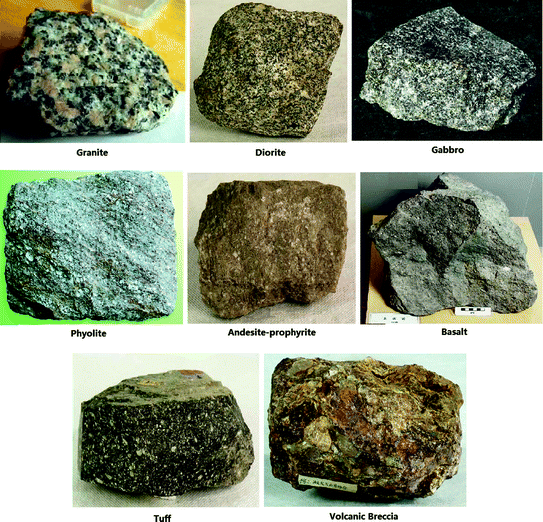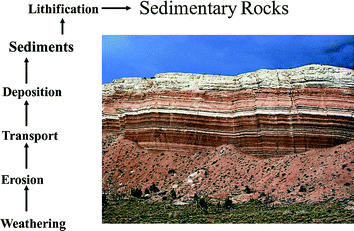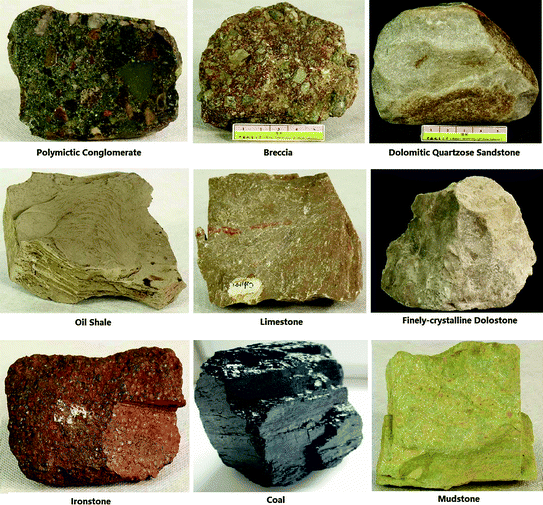The word category instead of classification which is mostly used in some books and articles is used for distinguishing different types of rocks in the Earth in this section. In Sect. , the word classification will be used to classify the rocks into different classes qualitatively and quantitatively according to their different characters and performances during the excavating process.
It is necessary and very useful for an engineer working in the field of rock excavation to understand some basic knowledge about the main categories of different rock types. It has more than academic interest. It is assist in understanding field conditions and dealing with them in the most effective manner.
1.1.1 Igneous Rocks
Igneous are the parents of all other rocks. They are formed from the cooling and hardening of molten rock deep inside the crust of the Earth. Magma (rock in a molten form) at high temperature is usually charged with varying amounts of liquids and gases which are mostly dissipated when the rock cools and solidifies. That molten rock is called magma rock or magma (Fig. ).
Fig. 1.1
Schematic presentation of igneous rocks in the Earths crust
When magma is forced upward out of the original magma pool, but does not pour out onto the ground surface, it will slowly cool in the new location. It is called intrusive rock because it has been intruded into the new location. Sometimes the intrusive rock may be extremely large, extending for hundreds of miles. Such a rock mass may be the core of a mountain range. A huge mass of intrusive rock masses is called batholiths .
Intrusive igneous rocks cool slowly, producing a coarse texture with mineral grains visible to the naked eye. The minerals that form are determined by the chemistry of the magma and the way that it cools (relatively slowly or quickly, steadily, or variably). The grains are typically interlocking and of more-or-less the same size.
Dikes are tabular igneous bodies formed vertically or across sedimentary bedding. Those formed horizontally or parallel to beddings are called sills .
When magma pours out onto the Earths surface, it cools, solidifies, and forms an extrusive rock or lava (sometimes also called volcanic ). Extrusive igneous rocks cool quickly, which causes very small crystals to form, if any at all. This produces fine-grained rocks, which, without a microscope, can be identified only by color. Like the intrusive rocks, the minerals formed reflect the chemistry of the magma. Colors vary from white to black, with pink, tan, and gray being common intermediate colors. The texture of these rocks can also be influenced by the amount of gas trapped in the lava when it cools.
If the presence of SiO2 content exceeds 62 %, the rock is considered as acidic (Felsic); from 62 to 52 % intermediate; from 52 to 45 % basic (Mafic); and <45 % ultra-basic (Ultramafic). The acid rocks, such as granite, are more abrasive and harder than the basic rocks, for example basalt, but they are more resistant to the impact.
The following are some very popular igneous rocks (Fig. ):
Fig. 1.2
Photographs of igneous rocks (Courtesy of China University of Geosciences)
Intrusive Igneous Rocks:
Granite. Granite is a common type of intrusive, acidic, igneous rock which is granular and phaneritic in texture. This rock consists mainly of quartz, mica, and feldspar. It is typically hard and strong and is often used for aggregates or building stone.
Diorite. Diorite is a gray-to-dark gray intermediate intrusive igneous rock composed principally of plagioclase feldspar (typically andesine), biotite, hornblende, and/or pyroxene. It may contain small amounts of quartz, microcline, and olivine.
Gabbro. Gabbro is also similar in some respects to granite and diorite, but is the next step toward a higher content of the ferromagnesian minerals. In gabbro, these dark minerals are dominant; in diorite, the feldspar is dominant.
Extrusive Igneous Rocks:
Rhyolite. Rhyolite is a light-colored, fine-grained, extrusive igneous rock that typically contains quartz and feldspar minerals.
Andesite. Andesite is an extrusive igneous and fine-grained volcanic rock like rhyolite except that is darker in color, and the chief feldspar component is plagioclase rather than orthoclase.
Basalt. Basalt is a common extrusive igneous (volcanic) rock formed from the rapid cooling of basaltic lava exposed at or very near the surface of a Planet or Moon. Basalt is a fine-grained rock with a composition like that of gabbro, getting its dark color from the ferromagnesian minerals iron and magnesium.
Tuff and Volcanic Breccia. These are formed from materials which have been ejected from volcanoes and solidified into rock. Tuff is composed of ash and the finer particles. Breccia is formed of the larger particles.
1.1.2 Sedimentary Rocks
Sedimentary rocks are formed by the deposition of material at the Earths surface and within bodies of water. Sedimentation is the collective name for processes that cause mineral and/or organic particles (detritus) to settle and accumulate or minerals to precipitate from a solution. Particles that form a sedimentary rock by accumulating are called sediments.
Before being deposited, sediment was formed by weathering and erosion in a source area and then transported to the place of deposition by water, wind, ice, mass movement, or glaciers which are called agents of denudation. Sediments are transformed into rock by cementing them, usually by calcite, silica, or iron oxides that glue the fragments together. Compaction is achieved when fragments are squashed together (Fig. ).
Fig. 1.3
Forming procedures of sedimentary rocks
Sedimentary rocks are deposited in layers as strata, forming a structure called bedding. Their texture ranges from very fine grained to very coarse. Colors include red, brown, gray, yellow, pink, black, green, and purple.
The following are some very common sedimentary rocks (Fig. ):
Fig. 1.4
Sedimentary rocks (Courtesy of China University of Geosciences)

